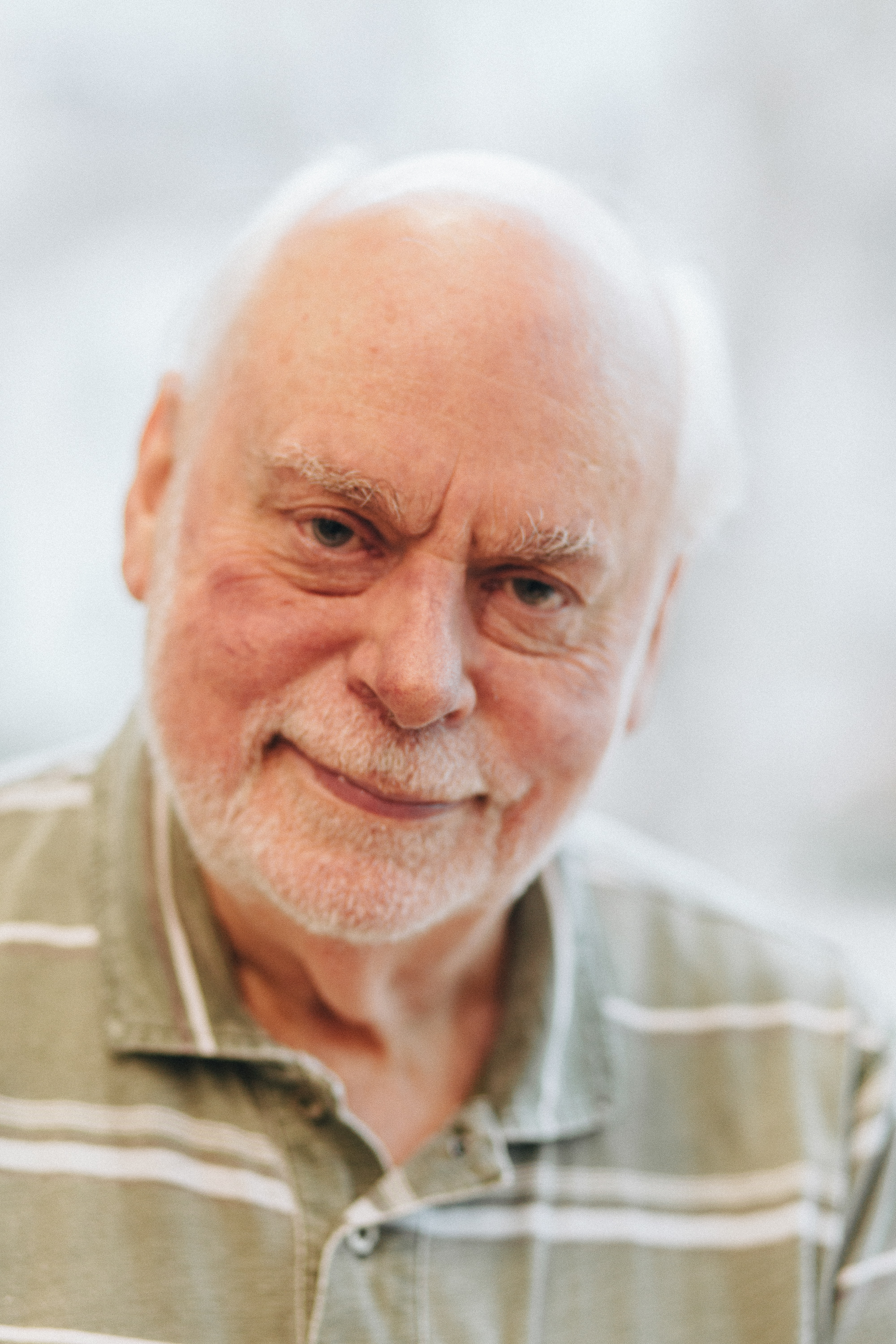Interview by Aimee Levitt
Photos by Danielle A. Scruggs
On December 10, Stoddart, a native of Edinburgh and now a professor at Northwestern, will be in Stockholm to receive the 2016 Nobel Prize for Chemistry. For the 74-year-old, chemistry is intimately bound up with art and culture: the interlinked Borromean rings, which appear in art all over the world, inspired him to create mechanical molecular bonds in his lab. The Nobel finally got him his own parking spot on campus, but he hopes it will also give him a pulpit to extol “the beauty of chemistry … the excitement of it, the fun.”
I was brought into chemistry not by bangs and smells and the sort of thing that I think is very negative. I was brought in (not to begin with—the art, that came later) by just the fascination with the fact that here was something that I could make like an engineer that allows you to express your creativity. Do you see what I’m saying? In a way that you don’t have in the other sciences. The other sciences—and even chemistry itself, of course—much of it is finding out what the secrets are. But chemistry is different insofar as you can construct things just like an engineer. So it’s the “making” component that makes, for me, chemistry pretty unique.
I do feel that the micromachine aspect has been moved too much to the front by Stockholm. I mean, who am I to debate this with them? But the title of my Nobel lecture, which I’m still working on, is “Design and Synthesis of Molecular Machines Based on the Mechanical Bond”—certainly I’ve got molecular machines there, but the last phrase, “the mechanical bond,” is really where I think [my colaureate Jean-Pierre] Sauvage and I have brought something totally new to chemistry. This is not a chemical bond, it’s not a sharing of electrons, it’s not an attractive bond—it’s a physical bond. Sauvage was the person who used the first component of molecular recognition. He used a metal line in order to bring two components together. And then we were working all through the 80s, and we used another approach without the metal, and we made, quite surprisingly, a mechanically interlocked pair of rings in a very, very high yield very easily. And that was really quite transformative.
Molecular machines are not really doing very much yet, in terms of the artificial ones we are trying to make. The natural ones that are of course around inside us, in the billions I guess, are sustaining life. And so we know that they are capable of absolute magic in terms of sustaining us as living human beings. Every time I move my muscles or we take our eyelids and flash them, or whatever you want to say, or move our fingers, our heartbeat—everything is related to molecular machinery that has been constructed by nature over zillions of years. And so there’s been a body of us that said, “If nature can do this, surely we can find out in the course of time how to do it ourselves.”
Both myself and colaureate Ben Feringa very often use the analogy of flight. If you wind the clock back, at the end of the 19th century, somebody as eminent as physicist Lord Kelvin was saying there would never be manned flight. And about 20 years after that, of course, the Wright brothers came along, and we started to get movement and get things off the ground. At the moment, I am reading a book by this man, Bill Bryson, One Summer, and it’s about America in 1927. And it tells the whole story about these very different aviators that were pioneers insofar as they were trying very hard to get these contraptions into the air. And they were not always successful. I mean, the death rate was high. And so, you know, 20 years on from the Wright brothers, not a lot of progress had been made. So if you want an analogy, that’s where I think our artificial molecular machines are today.
But fast-forward. Two weeks ago, I came back from Frankfurt on one of these Dreamliners—and you know, you’re just blown out of your mind. You’re sitting on this thing that’s sort of as big as this building. And effortlessly, it takes off into the air. Totally amazing. And so all I can say is, there’s going to be developments as a result of getting the equivalent of these molecular machines to where flying machines were in 1927. There’s going to be developments over the next maybe 90 years that are going to be mind-boggling. Actually being able to put my finger on them and say they’re going to cure cancer or they’re going to do this or that, I wouldn’t wish to do that, because I think that would be in the realm of hype. That would be in the realm of asking maybe too much of these machines at the moment. Well, I could be wrong. I have been wrong many times, of course. That wouldn’t be the first time.
I like to say that the prize is not just recognition of me as an individual. It’s much more the recognition of almost 400 young people over 50 years that have been very close to me, and maybe hundreds of others who have been on the periphery. I often say that I am first and foremost a professor who teaches and mentors, and that is what my legacy will be. It will be my students. It will not be the prize.
No, maybe I shouldn’t say that. But if it is the prize, a lot of these young people have, to varying extents, a component of it, the right to it. You know? They can have that sliver at 11 o’clock as you look at the medallion, if you like, and say, “That was me.” It’s all about teamwork. It’s not so much about one person. It’s, as I say, close on 400 that have been close to this activity. And you know, I’m taking 40 or 50 to Stockholm. So it won’t be much of my, what do you call it, prize money left at the end of that exercise, because that’s going to be costly. And I don’t mind. I mean that. People mean more to me than cash. v



![[photo of keisha howard]](https://people.chicagoreader.com/wp-content/uploads/2016/12/Keisha_Howard-3-150x150.jpg)
